The Crucial BX200 (480GB & 960GB) SSD Review: Crucial's First TLC NAND SSD
by Billy Tallis on November 3, 2015 9:00 AM ESTPerformance Consistency
Starting things off, our performance consistency test saturates the drive with 4kB random writes for a full hour, with a queue depth of 32, the maximum supported by the AHCI protocol used by SATA and most PCIe drives. This puts the drive's controller under maximum stress and writes enough data to exhaust all free space and spare area on the drive. This is an unrealistic workload for any client use, but it provides a worst-case scenario for long-term heavy use, and it sheds light on how different SSD controllers behave and if their performance will hold up as they fill up.
The average of the last 400 seconds of the test gives us a steady-state IOPS rating that is usually very different from what the manufacturer specifies for a new, empty drive. We also quantify the consistency of the drive's random write performance, and provide plots of the performance over the course of the test.
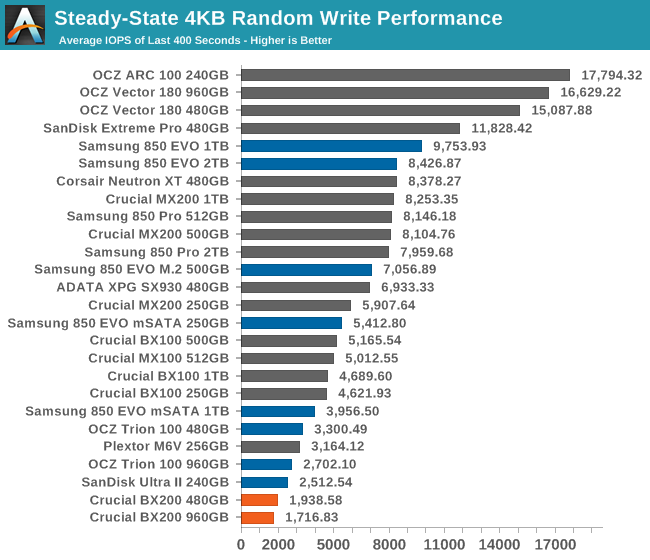
The BX200 is off to a poor start, with very low steady-state IOPS where the BX100 managed to place closer to the middle of the pack.
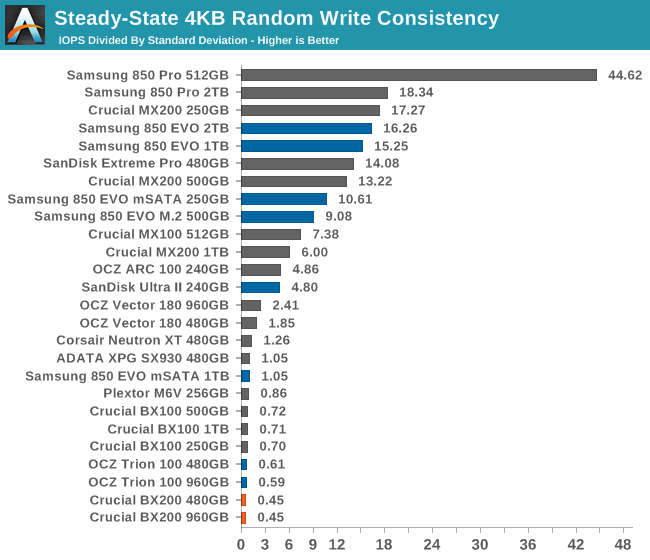
The BX200's consistency is also at the bottom of the chart, indicating that there's wide variability between its best and worst performance even after entering steady-state.
For a brief moment, the BX200 performs almost as advertised, and then for a few minutes it performs well for a budget drive, but when it runs out of cache and spare area, performance hits the floor.
Save for the periodic but infrequent excursions to 9k IOPS and 20-25k IOPS, the BX200's steady-state hovers between 200 and 700 IOPS: better than a hard drive, but not what we want to see from a SSD.


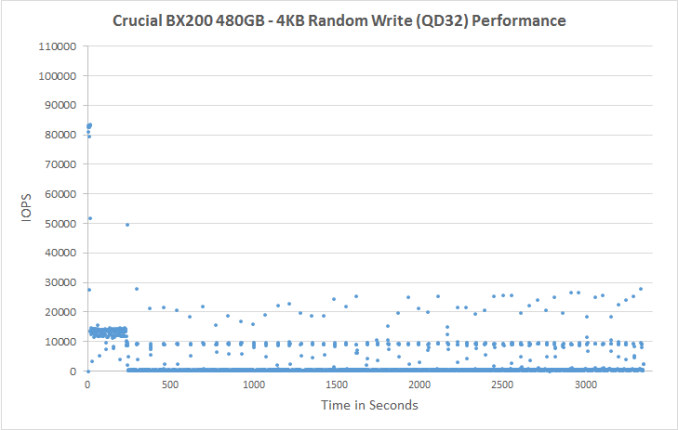
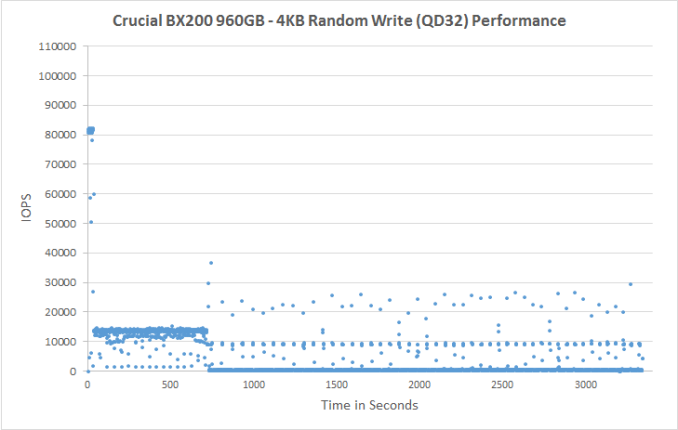
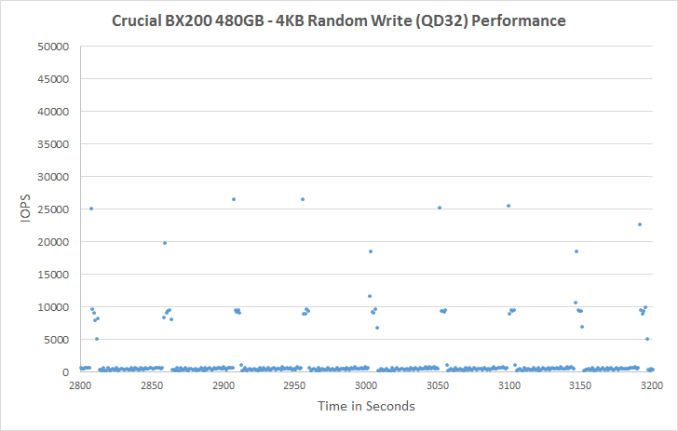









85 Comments
View All Comments
paulgj - Monday, November 9, 2015 - link
I just ordered a couple more BX100's 250GBdoggface - Tuesday, November 3, 2015 - link
The MX100 was just brilliant, an easy recommendation.The BX100 has been my go to value SSD, that l I recommended to many friends. The bx200 is garbage which costs more? And is about as bad as a HDD. What the hell crucial. What the hell.Luke212 - Tuesday, November 3, 2015 - link
BX100 and MX100 were great.... how can they go backward so badly?JDG1980 - Tuesday, November 3, 2015 - link
It's looking more and more as though TLC is a big flop. It doesn't seem to provide substantial price savings, and it comes at a considerable cost in performance, durability, and reliability.For a TLC drive to be worth it, it would need to be 1/2 to 1/4 the cost per gigabyte of a MLC solution on the largest drives. It then might be acceptable for people who want moderately priced bulk storage that's cheaper than standard SSDs. But that's not close to being the case now, and it may never be.
CiccioB - Wednesday, November 4, 2015 - link
Yeah, I still wonder if TLC is really reliable as producers advertise them.Samsung needed a "hack" to their 840 TLC series to solve data retention problems reducing life time.
We do not know if others have done the same without (obviously) telling publicly. And if 850 series has it under the hood.
I would go to MLC drives for few $ more. I feel them as more reliable and durable. And "feeling" is an important thing for me, as I put my data on them and saving few bucks may not really be an advantage when a TLC drive lives less then a MLC one.
For performance, I bet anyone to be able to discern differences in real life form an SSD to another. This are "synthetic" tests, where source of data is faster than SSD speed (RAM). For whatever real usage, anything comes from sources that are slower (HDD, network, optical disks). Load times into RAM is limited, as you don't usually load GB and GB into it but during a benchmark.
What it really matters is reliability, durability and price. TLC fails to make me comfortable with the first two criteria. Which, for me, are the most important ones.
CiccioB - Wednesday, November 4, 2015 - link
"This are "synthetic" tests"These are synthetic tests.
Edit button, please!
extide - Thursday, November 5, 2015 - link
Yeah it seems like you really need to go to 3D NAND to get decent TLC -- the 850 EVO's have so far been pretty much great. That significantly larger feature size really helps the TLC out.Beaver M. - Wednesday, November 4, 2015 - link
No wonder I have been skipping reviews of new SATA SSDs for a few years now. Nothing can touch the Samsung ones, and thats sad.ghanz - Wednesday, November 4, 2015 - link
Review request: Please do a review of Sandisk Plus, their current lowest tier SSDs available in 120gb and 240gb capacities.Will be interesting to see how those compares to the BX100 and BX200 in similar capacities.
Mugur - Wednesday, November 4, 2015 - link
I must buy another BX100 until the stocks will dry...